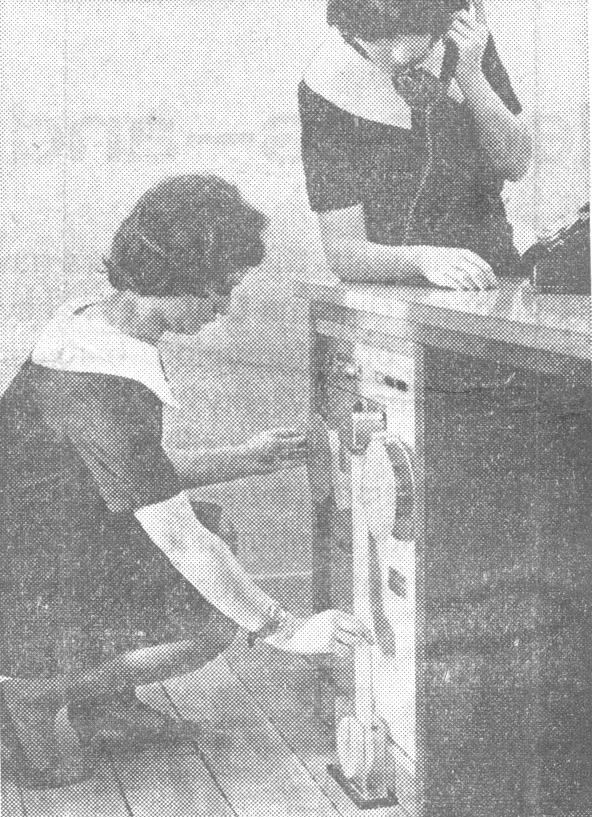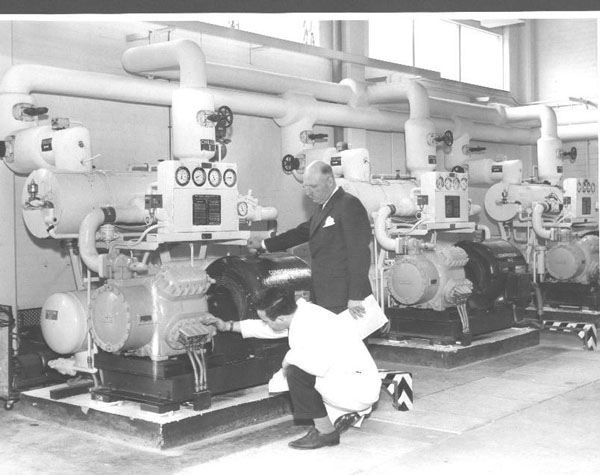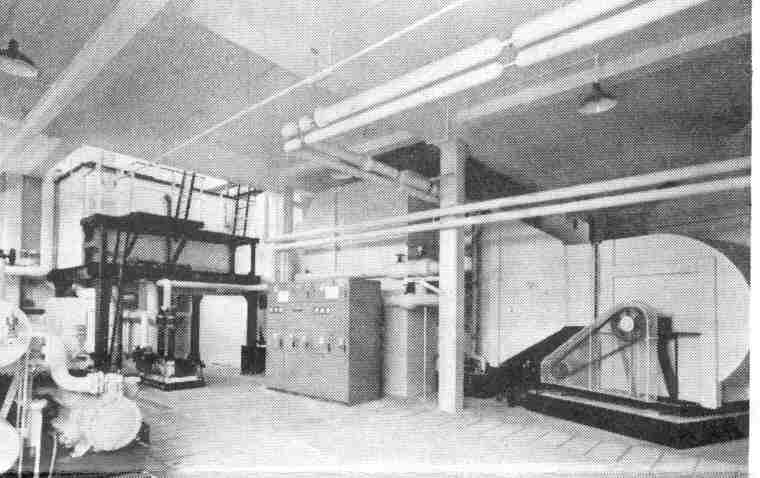

...Pembrokes has been offered a short-term research fellowship in mathematics by the Atlas Computer Laboratory of the National Institute for Research in Nuclear Science, but the addition of a full mathematics fellowship is regarded as of the utmost importance. The endowment of such a fellowship will cost £20,000.
With the advent of the high-speed digital computer there has appeared only for the second time in human affairs, a tool which is not restricted to a particular use. The steam engine made available to man a source of motive power other than muscles. The computer offers a source of power other than brains for handling information. There is a widely held belief that the high-speed computer is a harbinger of a second technological revolution, the social and economic consequences of which may well make the first seem like a minor disturbance of human history. What is only now beginning to become clear is that there is no corner or cranny of a man's intellectual, technological, or cultural life which is not capable of being penetrated and transformed by the computing methods of today and tomorrow.
The first place in which the protean capacities of the high-speed computer make themselves most immediately known is in a large university. Assembled within the same perimeter is a sample from the whole kaleidoscope of arts, sciences and technologies which comprise our culture. A new dimension thus enters university work, when, for example, a Greek scholar and an entomologist can each discover not only that computing can solve his problem, but even on an occasion that it is a problem in which two apparently remote disciplines have basic features in common. The classification of words and the classification of insects may require a strictly analogous mathematical and computational treatment.
A problem common to a wide range of different departments and projects concerns the processing of results initially recorded as wavy lines on paper. Before such a record can be handled by computer these continuous traces must be converted into a sequence of numbers. To obtain this analog-to-digital conversion automatically is essentially the same problem, whether the traces have been obtained from an electro-encephalogram, a barometer, an anemometer in a wind tunnel, or a seismograph monitoring earth tremors.
The International Seismological Research Centre, recently established with Government aid under the aegis of the university department of Astronomy, has come to the rescue in this instance and has generously made accessible to other research workers in the university a full scale conversion system of advanced type.
The situation on the medical side of the university is of particular interest in illustrating an attitude to the role of the small computer. This attitude is quite new in this country and points the way to future university patterns. By a small computer is meant one costing in the range of £10,000-£100,000 rather than £100,00-£1m. The new feature is the realization that an important function of the small machine is as a tool of research into ways of using large machines more profitably.
Other things being equal, it is always cheaper to do bread-and-butter computing on a larger machine since speeds go up much faster than costs. But the research and development often needed to reduce a problem to the bread-and-butter stage is one that typically requires a very great deal of trial and error. In the present state of the art in this country, only the small machine is available for such cut-and-dry work.
Everything described so far is concerned with the side of computer science known as software, distinct from the electronic hardware which constitutes the actual computing equipment. With hardware facilities Edinburgh has chosen to travel a road of its own, and is venturing far in the hope of gaining much. Two years ago the university rejected as its ration from the University Grants Committee, a small second-hand obsolete computer. Discussions were held with Dr Jack Howlett, Director of the National Institute for Research in Nuclear Science. Generous and timely assistance from this source made possible the launching of a very considerable experiment - the attempt to use, by telephone-wire connection the giant Atlas computer at Manchester, 200 miles away. This venture is still in its early stages, and will shortly enter a new phase in which the connection will be to the Atlas at N.I.R.N.S. in Chilton, Berkshire. A quota of computing time on this machine is to be made available to all British universities, initially free of charge. A start will also be made in operating on line. This means a system where the user and the remote machine interact directly back and forth along the wire as opposed to the mere passive transmission of programme and data.

This programme is seen as short-range pioneering with a long-range purpose, the purpose being to train and discipline ourselves to the point where we can justly expect to be given a leading part in the development in Britain of the first large on line systems. In such systems many users have simultaneous access to the central unit through a variety of input and output channels, including not only typewriter but also handwriting, drawing, speech, and visual displays of all kinds. These, as far as Britain is concerned, still belong to the future. Yet their potential impact not only upon university research but on industrial, commercial and military applications would be difficult to overestimate. To bring these systems within reach must therefore be viewed as an enterprise of more than academic, and more than local, importance.
Pembroke, Oxford: Elected to a research fellowship in mathematics, held in conjunction with a post at the Atlas Computer Laboratory of the National Institute for Research into Nuclear Science from October 1 : I. P. Grant.
The following elections have been made at St Catherine's, Oxford:
Research fellowship in mathematical biology from October 1, 1965 (in conjunction with the Atlas Computer Laboratory of the National Institute for Research into Nuclear Science) : A. W. F. Edwards.
When it was decided to install an I.C.T. - Ferranti Atlas high-speed digital computer at N.I.R.N.S., Chilton, a special building had to be planned by the Southern Works Organisation, U.K.A.E.A., to house it. The Atlas, five of which are currently being installed in the U.K. following the prototype at Manchester University, is one of the most powerful machines in production and when on full load the heat released from all computer sections is of the order of 150kW., and consequently a considerable cooling problem is involved. added to this are the building heat gains, solar lighting, personnel, workshop, etc., and it was early appreciated that an air conditioning installation would be of some magnitude.

The equipment sections or cabinets to be housed on the ground floor actually contribute the bulk of the heat emission, about 100Kw., and it was decided to absorb this directly by means of chilling sets actually incorporated in the cabinets. The balance, 45kW., radiated from the tape decks on the first floor, with the rest of the building heat gains, had to be absorbed by the A.C. plant which with the pressurising and ventilation fresh air load resulted in a plant capacity of 60 tons R and a total designed air circulation of about 42,000 c.f.m. In order to provide for the requisite chilled water for the ground floor equipment coolers, three 30 T.R. refrigeration machines with remote air-cooled condensers have been installed in the plant room together with a 2,500-gallon storage tank and all necessary circulating pumps to the various air cool batteries.

An unusual air conditioning method was employed based on the split system involving a centrally controlled cooler/heater section to balance the space sensible heat and a separate fresh air conditioner under dew-point control. Duplicate fans re-circulate about 88% of room air which discharged through the main cooler/heater section into a large chamber in which are housed absolute filters. the conditioned fresh air is injected into this.
Duplicate main supply fans draw from this chamber and discharge through the distribution duct system to the various rooms on the two floors. The duct mains are carried up and across a false ceiling to the first floor, terminating in flush-fitting diffusers, whilst for the ground floor the main is exposed and fitted with side outlet grilles. The balancing of the supply air quantities was somewhat critical since as much as fifty-five air changes an hour were necessary in the first floor tape-deck and computer operating zone. Air is generally re-circulated back to the plant at low-level through wall-panel grilles.

The specified conditions to be maintained throughout the building under the usual outside design extremes was 70°F.∓5°F. with relative humidity at 50% ∓ 10% as laid down by the computer manufacturers and with due regard to operator comfort. Since, however, the plant throughout is controlled b an electronic sensing system operating motorised chilled water and steam valves to the various batteries, much closer control than this is attainable in practice.
In addition there is a full range of remote recording and alarm equipment with indicators housed in the main cubicle-type motor switchgear and control panel located in the plant room.
The air conditioning plant was installed throughout to U.K.A.E.A. standards by Heat and Air Systems Ltd., employing as principal sub-contractors Messrs. Wm. Douglas and Co. for the refrigeration plant. Messrs. Honeywell Controls Ltd. for the electronic equipment, Messrs. Darlington Insulations for duct and plant lagging, and Messrs. E.A.C. Ltd for the switchgear panel.